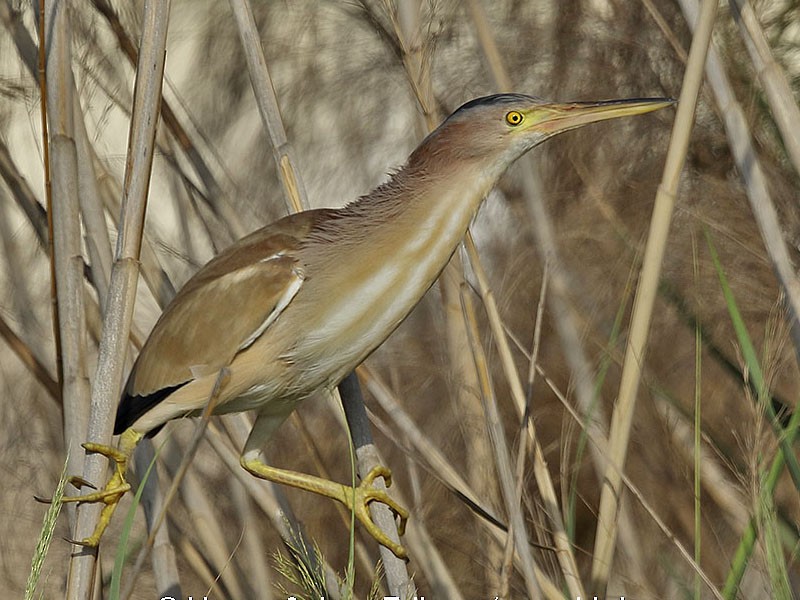
Yellow Bittern
Ixobrychus sinensis
Order:
Family:
Size:
36 to 38 cm (14 to 15 inches)
Weight:
140-150 grams
Taxonomy:
1789 by Gmelin.
Short Description:
The yellow bittern (Ixobrychus sinensis) is a small bittern. It is of Old World origins, breeding in the northern Indian Subcontinent, east to Japan and Indonesia. It is mainly resident, but some northern birds migrate short distances. It has been recorded as a vagrant in Alaska and there is a single sighting in Britain, from Radipole Lake, Dorset on November 23, 1962 – however, the BOU has always considered this occurrence to be of uncertain provenance and currently it is not accepted onto the official British List. This is a small species at 36 to 38 cm (14 to 15 in) in length, with a short neck and longish bill. The male is uniformly dull yellow above and buff below. The head and neck are chestnut, with a black crown. The female\'s crown, neck and breast are streaked brown, and the juvenile is like the female but heavily streaked brown below, and mottled with buff above. Yellow bitterns feed on insects, fish and amphibians. The yellow bittern\'s breeding habitat is reed beds. They nest on platforms of reeds in shrubs. Four to six eggs are laid. They can be difficult to see, given their skulking lifestyle and reedbed habitat, but tend to fly fairly frequently, when the striking contrast between the black flight feathers and the otherwise yellowish plumage makes them unmistakable. Uncommon resident, preferring dense reed cover and perennial pools. Lergely crepuscular in hunting. Unlike Little Bitterns, nests in pure reed stands.
Far far away, behind the word mountains, far from the countries Vokalia and Consonantia, there live the blind texts. Separated they live in Bookmarksgrove right at the coast
Lahore,Bahawalpur,Kasur,Multan,Attock,Khushab,Mianwali,Rawalpindi,Sialkot,Badin,Jacobabad,Sanghar,Sukkur,Karachi East,Karachi South,Haripur,Mirpur
The behavior of the Yellow Bittern (Ixobrychus sinensis) in Pakistan is reflective of its global habits. These birds are typically solitary and secretive, preferring to remain hidden within dense vegetation such as reed beds, marshes, and wetlands. Their cryptic plumage allows them to blend seamlessly with their surroundings.
Far far away, behind the word mountains, far from the countries Vokalia and Consonantia, there live the blind texts. Separated they live in Bookmarksgrove right at the coast
About Photographer : Hello World
Facebook
Twitter
Instagram
Flicker
LinkedIn


